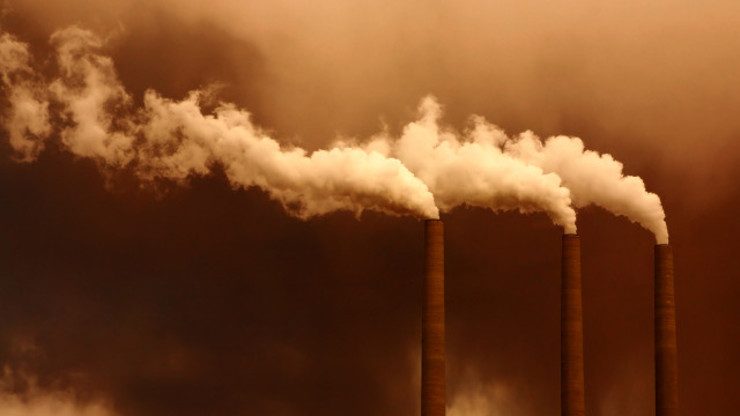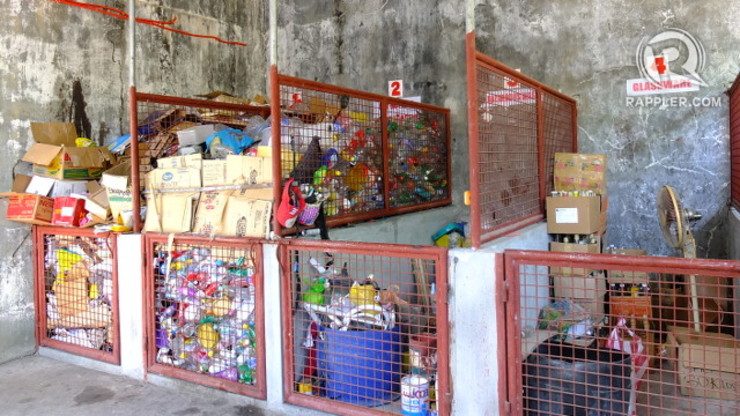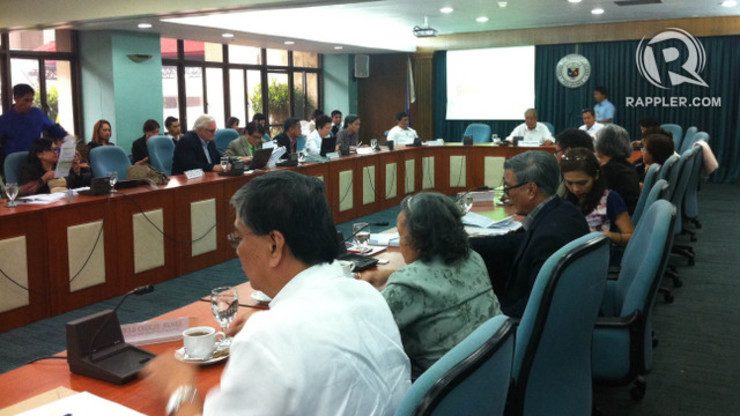SUMMARY
This is AI generated summarization, which may have errors. For context, always refer to the full article.

MANILA, Philippines – Supporters and opposers of waste incineration put up a fight on Wednesday, November 19, during a House hearing on a proposed bill to lift the waste incineration ban in the Clean Air Act.
Those who want the bill lifted, mostly government agencies, cited the urgent need for an effective and fast way to rid highly-populated cities of garbage.
But those who insisted on the ban, mostly environmentalists, said the good old methods of segregation, recycling and composting just need to be implemented more effectively.
House Bill 3161, authored by Caloocan Representative Edgar Erice, wants to allow the use of incinerators for the “burning of municipal, bio-medical and hazardous wastes.”
The Clean Air Act explicitly bans any burning of these types of waste if the process of burning “emits poisonous and toxic fumes.”
It also orders local government units to instead implement a “comprehensive ecological waste management that includes waste segregation, recycling and composting.”
Erice’s proposed bill comes at a time when Metro Manila cities are spending hundreds of millions of pesos to throw away their garbage. The Payatas landfill being used by Quezon City, the biggest spender on garbage management, is already operating past its capacity.
The Quezon City government is one of the biggest supporters of Erice’s bill. It already has plans to put up a waste-to-energy facility that will include incineration technology to put an end to its garbage woes.
Erice believes that waste incineration is the long-awaited solution to the growing problem of unmanageable garbage in Metro Manila and other cities.
“Reuse, reduce, recycle….None of those have been successful. We already gave the Clean Air Act, the Solid Waste Management Act a chance but nothing has happened. They say local governments don’t want to follow them. It means there is really a problem with their enforceability,” he argued in a mix of English and Filipino.
Do the 3Rs deserve a chance?
Raphael Lopez of Global Alliance for Incinerator Alternatives countered that the 3Rs are not working simply because government has not invested enough into them.
“We need to enact a law that will develop recycling so there can be an environment for recyclers to blossom in our country. We keep saying there are only a few people recycling. Let’s enact a law that provides incentives for other zero waste initiatives,” he said.
Garbage budgets of LGUs go mostly to paying dump trucks to bring household waste to landfills. But 93% of this waste does not even need to leave the households or barangays.
According to a characterization of Metro Manila waste by the Mother Earth Foundation, 93% of Metro Manila waste can either be composted (organic waste is 52%) or recycled (glass, metals, hard plastic, paper make up 41%).
Composting and recycling can be done by households themselves or in Materials Recovery Facilities (MRFs) which the Solid Waste Management Act requires of every barangay.

The 3Rs are already at work in some model LGUs. Some LGUs are able to keep 90% of their garbage away from landfills, significantly reducing expenses on dump trucks. (READ: QC wastes P250M yearly with flawed garbage program)
The safest and most efficient waste incinerators may cause millions to billions of pesos, added Lopez. Pursuing zero waste programs would come out much cheaper. A DENR-standard MRF that could keep 90% of your garbage from the landfill, for instance, would only cost P500,000 to construct.
Erice countered that the 3Rs can still exist alongside waste incineration. Some of the cleanest countries in the world, like Singapore and Japan, have excellent recycling initiatives but still maintain waste incinerators that turn the waste into electricity.
German environmentalist Juergen Lorenz replied that it is impossible for the 3Rs and waste incineration to complement each other.
Waste incinerators thrive on mixed garbage to generate the most amount of energy. The more garbage generated, the better and more cost-efficient for waste incineration. The 3Rs, meanwhile, aim to reduce the amount of garbage generated.
“Putting them beside each other is not likely. You are likely to incinerate all the garbage,” Lorenz said.
He recommended instead for LGUs to transition to full recycling and segregation and for landfills to be designed properly.
Ang Nars Partylist Representative Leah Paquiz called for an oversight committee to immediately conduct a law compliance audit before any amendments to the Clean Air Act can be made.
She blamed the DENR for weak enforcement and the low compliance of LGUs with the Solid Waste Management Act.
Possibly cancerous emissions
Erice gave assurances to health advocates at the hearing that his bill will ensure the management of air pollution from waste incinerators.
But no matter how state-of-the-art the technology is, waste incinerators will always emit highly toxic substances such as dioxins and furans, admitted Department of Environment and Natural Resources (DENR) representative Geri Sañez.
Some types of dioxins and furans are likely to be carcinogenic, according to the US Environmental Protection Agency (US EPA). They are also known to cause changes in hormone levels, skin diseases, and even affect the development of animal fetuses.

The DENR, one of the government agencies that supports waste incineration, said it is already improving its capability to monitor dioxins and furans.
“We are capable of sampling for dioxins and furans and other toxic emissions. We are currently building infrastructure and for 2015, included in the budget, to establish a dioxin laboratory,” said Sañez who works for the DENR’s Environmental Management Bureau.
Waste incinerators must comply with DENR standards of 0.01 nanogram per normal cubic meter.
But Dr Metodio Palaypalay of the Zero Waste Recycling Movement of the Philippines said, “There is no such thing as a safe margin for dioxin.”
Humans are exposed to dioxins and furans mostly by eating contaminated food, said the US EPA. The toxins stay and build up in the fatty tissues of animals like cows, pigs and chickens. They can also accumulate in the air and soil.
The Department of Health (DOH) said it supports waste incineration only for medical and hazardous wastes since these types of waste are often too dangerous to compost or cannot be recycled or reused.
Some countries allow the incineration of human anatomical waste, discarded medicines, or solid items contaminated with blood and body fluids.
Non-governmental organization Health Without Harm, however, said that methods like autoclaving, microwaving and alkaline hydrolysis are viable alternatives to burning.
The Metropolitan Manila Development Authority (MMDA) also supports waste incineration as a technology that promises to solve Metro Manila’s garbage problem. – Rappler.com
Industrial waste image from Shutterstock
Add a comment
How does this make you feel?
There are no comments yet. Add your comment to start the conversation.